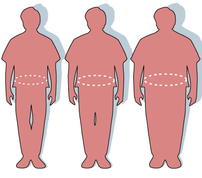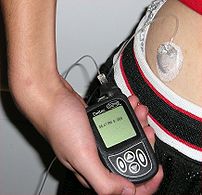[amazon_link asins=’B01AD2YCQM,B00KLE7OV8,B00CHU02W2,1840810793,B00004OCL2,B00B041SBA,B018Y7Y0N8,B01M6C9HP9,B0044SV3AU’ template=’ProductLink’ store=’finmeacur-20′ marketplace=’US’ link_id=’1eea7f9a-2f46-11e7-95cc-1b37c8ae66dd’][amazon_link asins=’B004VLV8CS,0307336727,B0052OOVJU,B00A6TKLRC,B00028Q450,0760345988,B005XDUA9K,B0049YK20Q,1580087590′ template=’ProductLink’ store=’finmeacur-20′ marketplace=’US’ link_id=’ec47d937-2f45-11e7-9e30-f768e6c0f0db’][amazon_link asins=’B001G5J83S,B000Z8X76G,B00W673PXO,B01A17E7Y6,B01E5SKWGE,B00E0SJQ6M,B00OECQVZ8,B00B04858E,B00K7A2VRS’ template=’ProductCarousel’ store=’finmeacur-20′ marketplace=’US’ link_id=’7886d36f-2f45-11e7-927b-416a0948eed2′][amazon_link asins=’B00014DZL6,B00E5ZAWIG,B000VH3ZYU,B000MGR1N6,B003P5MUKU,B01MCRWBCZ,B01M6V4A9J,B00028P04G’ template=’ProductCarousel’ store=’finmeacur-20′ marketplace=’US’ link_id=’39f53758-2f45-11e7-b164-b1001ab921e5′]
Introduction:
Chromium is a mineral that humans require in trace amounts. It’s found in small quantities in foods such as brewer’s yeast, calf liver, whole grains, processed meats and cheese.
In 1959, chromium was first identified as an element that enables the hormone insulin to function properly.
CLICK & SEE THE PICTURES
Since then, chromium has been studied for diabetes and has become a popular dietary supplement. It is widely available in health food stores, drug stores and online.
Definition :
Chromium, a “transition” metal, is of intermediate atomic weight – that is, it is not considered either a heavy metal or a light metal. It is found primarily in three chemical states depending on its electrical charge. Common forms are chromium-0, which has no charge, chromium+3, which has an ionic charge of plus 3, and chromium+6, which has a charge of plus 6.
Chrome metal (the form chromium-0) is the element that makes steel “stainless.” Chromium in this form is hard, stable, and resistant to chemical changes such as oxidation or rust. Steel alloyed with chromium is harder and less brittle than iron and highly rust-resistant. This form of chromium is also used to coat or “chrome plate” the surface of other metals to produce a hard, shiny, chemically resistant surface.
The primary form of chromium found in the environment is chromium+3, which is also quite stable. This common form of chromium is always found in a complex with other chemical partners such as oxygen or chlorine. In these compounds it is very “inert to substitution”, that is, it is resistant to changing its form or exchanging its chemical partners.
Though small quantities of chromium+6 are found in nature, most of the chromium in this form is man-made. Chromium+6 is easily and rapidly reduced to chromium+3 by many chemicals and conditions, so it is not very stable in the environment. Like chromium+3, chromium+6 is usually found in chemical complexes with other elements, for example bound with several oxygen atoms to form chromate. It is very difficult to oxidize chromium+3 to chromium+6, though it can be done with strong oxidizing agents and very high temperatures. An industrial process called “roasting” is used to oxidize the chromium+3 derived from ores into chromium+6, a form used in a wide variety of commercial products.
Where is chromium found?
Chromium is widely dispersed in the environment. In the Earth’s crust chromium is present at an average of 140 parts per million (ppm), but is not distributed evenly. High concentrations of chromium can be found in certain ores, which are mined commercially.
There are trace amounts of chromium in rocks and soil, in fresh water and ocean water, in the food we eat and drink and in the air we breathe. Levels of chromium in the air are generally higher in urban areas and in places where chromium wastes or “slag” from production facilities were used as landfill.
Chromium wastes have been detected in many landfills and toxic waste sites across the country, usually in combination with other metals and chemicals. In the Aberjona River watershed near Boston Massachusetts, industrial wastes containing chromium contaminated the river and pond sediments. In some areas the sediments contain as much as one to two percent chromium by weight. However, recent studies suggest that people living nearby have received very little exposure to the chromium from these sediments. The principal impact is ecological in areas such as this, where concentrations of several toxic materials collectively threaten aquatic food webs and the wildlife they support.
General Uses of chromium
Chromium is used in paints, dyes, stains, wood preservatives, curing compounds, rust inhibitors and many other products. However, the predominant use of chromium is for production of stainless steel and in chrome plating. A radioactive form of chromium is used in medicine to tag, or label, red blood cells inside the human body. The labeling is permanent for the lifetime of that cell, so it is a useful way to look at long-term patterns of blood cell turnover in the body, to look for evidence of internal bleeding and for similar studies.
click & see
Because of commercial demand, chromium-containing ores have been mined and processed intensively over the past century, and many industries manufacture or use chromium containing compounds.
Chromium for health
Humans need chromium, in the form of chromium+3, for proper health. However, most people get all the daily chromium they need from a normal, well-balanced diet.
Nutritionists have learned over the past century that certain substances, such as vitamins and minerals, are essential to normal functioning and health. These substances are not made in the body, so they must come from foods. (The British Navy discovered this connection in the 1700s, when they observed that sailors on long sea voyages often developed a condition called scurvy. Adding citrus fruits such as limes to the sailors’ diets prevented the condition. This is how English sailors first came to be known as “Limeys.”) Since chromium is present in all foods, and is especially high in certain plants, few people are deficient in dietary chromium.
Chromium act as a nutrient:
The best known nutritional effect of chromium is that it appears to assist insulin in regulating blood sugar (glucose) levels. Insulin is a small protein hormone that is released into the blood when blood glucose levels get too high. Insulin then binds to a receptor on the outside of cells, causing them to absorb more glucose from blood, returning blood glucose levels to normal. If glucose levels fall too low, other signals in the body prompt cells to release glucose to the blood. This “seesaw” glucose regulation is disrupted in people with diabetes, usually due to a lack of insulin production or a failure of cells to properly respond to insulin. Chromium appears to enhance the effects of insulin once insulin binds to its receptor.
Human bodies do not appear to store or absorb chromium+3 very well, taking up only 1 or 2 percent of the total chromium available in the intestines from food. But humans do have a way to take up more chromium when it is needed – the lower the body’s level of chromium, the more efficiently it is taken up from the intestines. Chromium+3 does not easily cross cell membranes, and it appears to interact with cells only when needed, which suggests that it is stored in a form the body can rapidly mobilize, either in blood or nearby where blood can easily draw on it.
The form of chromium associated with enhancing insulin’s effect is a complex of several chromium+3 atoms bound together with amino acids. The response of cells to insulin is much greater in the presence of this LMWCr complex (also called chromodulin). The complex appears to be different from the storage form of chromium in the blood, which is not yet well defined.
Recently, Dartmouth toxicologist Joshua Hamilton and his colleagues discovered that chromium also affects the other side of the “seesaw” that controls blood glucose levels, increasing cell signals that offset the effects of insulin. This appears to be through interaction with another as yet unknown protein receptor on the surface of cells. The mechanism for this effect and the identity of this new receptor are intriguing research questions that remain to be answered. There may also be other uses of chromium by the body that remain to be discovered.
Views on Chromium
Chromium is also believed to help the body process carbohydrates and fats. It is marketed as a weight loss aid for dieters and an ergogenic (muscle-building) aid for bodybuilders and athletes. One form in particular, chromium picolinate, is popular because it is one of the more easily absorbed forms. In 1995, a study headed by Diane Stearns, PhD, at Dartmouth College generated controversy about the safety of chromium picolinate. Click to see:->Chromium for Weight Control
The researchers added high concentrations of chromium picolinate, chromium chloride or chromium nicotinate to hamster cells in culture and found that only chromium picolinate could damage the genetic material of the hamster cells.
Since then, other laboratory studies using cell cultures and animals have suggested chromium picolinate causes oxidative stress and DNA damage.
Critics say that the scientists used unrealistically high doses and that administering chromium to cells in test tubes is not the same as taking chromium supplements orally.
No adverse events have been consistently and frequently reported with short-term chromium use in human studies. For this reason, the Institute of Medicine has not set a recommended upper limit for chromium.
You may click to see :-> Benefits, Deficiency and Food Sources of Chromium
Some Informations on Safety of Chromium
In 2004, the Institute of Medicine reviewed the safety information on chromium for a prototype monograph and concluded that chromium picolinate is safe when used in a way consistent with published clinical data (up to 1.6 milligrams of chromium picolinate per day or 200 micrograms of chromium per day for three to six months).
There is very little information, however, about the safety of long-term use of chromium. There have been rare clinical case reports of adverse side effects after taking chromium picolinate supplements.
For example, a report published in the journal The Annals of Pharmacotherapy described the case of a 33-year-old woman who developed kidney failure, liver damage, and anemia after taking 1,200 to 2,400 micrograms of chromium picolinate (approximately six to 12 times the recommended daily allowance) for five months for weight loss.
The woman was being actively treated with antipsychotic medication, so it’s difficult to say whether it was the chromium, the combination of chromium with the medication, or another medical problem that predisposed her to such a reaction.
In a separate case report, a 24-year-old man who had been taking a supplement containing chromium picolinate for two weeks during his workout sessions developed acute kidney failure. Although chromium picolinate was the suspected cause, it’s important to note that there were other ingredients in the supplement which may have been responsible.
There are some concerns that chromium picolinate may affect levels of neurotransmitters (substances in the body that transmit nerve impulses). This may potentially be a concern for people with conditions such as depression, bipolar disorder, and schizophrenia.
Chromium picolinate may have an additive effect if combined with diabetes medication and cause blood glucose levels to dip too low. That’s why it’s important to talk your doctor before taking any form of chromium if you are also taking diabetes medication.
Chromium supplements taken with medications that block the formation of prostaglandins (hormone-like substances), such as ibuprofen, indomethacin, naproxen, and aspirin, may increase the absorption of chromium in the body.
The safety of chromium picolinate in pregnant or nursing women has not been established. Although there is no human data, chromium picolinate administered to pregnant mice was found to cause skeletal birth defects in the developing fetus.
Bottom Line
Given that chromium picolinate supplements in high doses appear to provide very little if any health benefit while possibly carrying some risk, it is my opinion that high doses of chromium picolinate should be avoided, at least until there is more compelling evidence of benefit, or more evidence about side effects.
If you are currently taking chromium picolinate supplements and are experiencing any new symptoms, including the following, call your doctor:
*Unexplained bruising
*Nosebleed
*Skin rash or blisters
*Urinate less than normal
*Feel very tired
*Loss of appetite
*Nausea or vomiting
*Sleep disturbances
*Headache
*Dizziness
Disclaimer:The information presented herein is intended for educational purposes only. Individual results may vary, and before using any supplements, it is always advisable to consult with your own health care provider.
Resources:
http://altmedicine.about.com/od/herbsupplementguide/a/chromiumsideeff.htm
http://altmedicine.about.com/od/dietpillssupplements/a/dietpills.htm
http://www.dartmouth.edu/~toxmetal/TXQAcr.shtml

![Reblog this post [with Zemanta]](https://i0.wp.com/img.zemanta.com/reblog_e.png?w=580)













